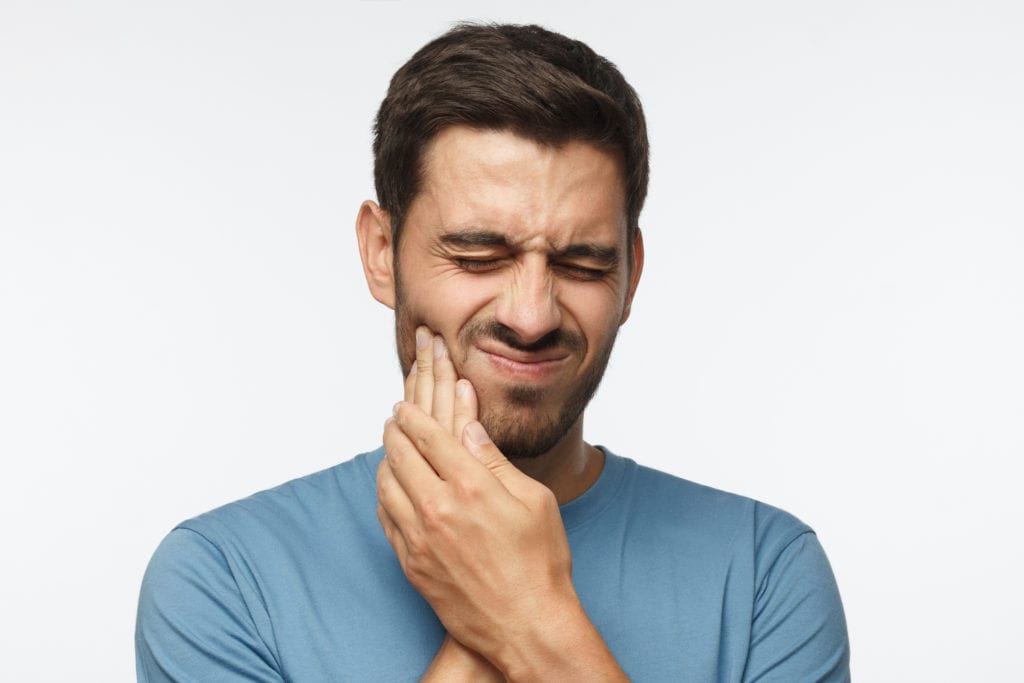How to Get Fast TMJ Relief: Start with the 3-Finger Test for Diagnosis
Do you wake up with jaw pain, experience popping sounds while chewing, or feel tightness around your temples and ears? These are signs of TMJ disorder (Temporomandibular Joint Dysfunction), a condition affecting millions. While it can be frustrating and even debilitating, relief might start with something as simple as a 3-finger test.
If you're wondering, “What is the 3 finger test for TMJ?” — you're not alone. This simple self-assessment tool can be the first step toward diagnosis and treatment. In this article, we’ll break down everything you need to know: how the test works, what your results mean, and how you can find fast relief from TMJ discomfort.

Understanding TMJ: What You Need to Know
Before diving into the 3-finger test, it’s important to understand what TMJ is. The temporomandibular joints connect your jawbone to your skull and act like sliding hinges, enabling you to talk, chew, and yawn. When these joints become inflamed or misaligned, it can lead to:
-
Jaw pain or tenderness
-
Clicking or popping sounds
-
Difficulty opening your mouth
-
Earaches or headaches
-
Facial muscle tightness
TMJ disorder can be caused by teeth grinding, stress, misalignment, arthritis, or trauma. Many people suffer for years without realizing they have a treatable condition.
What is the 3 Finger Test for TMJ?
The question, “What is the 3 finger test for TMJ?” often pops up in online searches and doctor’s visits alike — and for good reason. It’s one of the easiest and quickest ways to screen for TMJ dysfunction at home or in a clinic.
How It Works:
-
Stack your index, middle, and ring fingers together vertically.
-
Try to insert them into your open mouth — gently and without forcing.
-
Note how far your mouth opens and whether you feel any pain or discomfort.
Interpretation:
-
Normal Result: You can comfortably fit 3 fingers in your mouth without pain.
-
Mild Restriction: You can fit 2.5 fingers with slight discomfort.
-
Moderate to Severe Restriction: Only 1–2 fingers fit, and you experience pain or resistance.
The 3-finger test is not a standalone diagnosis, but it’s a valuable screening tool that alerts you to potential TMJ dysfunction. If your results indicate limited jaw mobility or pain, it’s time to seek professional help.
Why the 3-Finger Test Matters
So, what is the 3 finger test for TMJ, and why is it so important? Here’s what makes it a go-to diagnostic aid:
-
Quick and Non-Invasive: No machines, no needles — just your hand and a mirror.
-
Immediate Feedback: You’ll instantly know if your jaw function is limited.
-
Helps with Early Detection: The sooner TMJ is diagnosed, the easier it is to manage.
Dentists and physical therapists often use the 3-finger test as a baseline measure to track progress during treatment.
Common Symptoms Indicating You Need the 3-Finger Test
If you’re asking yourself, “Should I try this test?” — here are some signs that say “yes”:
-
Jaw stiffness, especially in the morning
-
Clicking or grinding sounds while moving the jaw
-
Facial swelling or tenderness
-
Locking of the jaw in open or closed position
-
Difficulty chewing or uneven bite
Doing the 3-finger test can help you connect the dots and determine whether you need professional help.
Fast TMJ Relief Options After Diagnosis
Once you've used the test to self-assess, what comes next? Whether you’ve asked “What is the 3 finger test for TMJ?” or already know you have TMJ dysfunction, these relief options are often recommended:
1. Jaw Exercises and Stretching
Regular jaw stretches and mobility exercises can help loosen tight muscles and improve range of motion. These can be prescribed by a physical therapist.
2. Hot and Cold Therapy
Applying heat can relax stiff muscles, while cold packs reduce inflammation and numb sharp pain.
3. Custom Night Guards
If grinding or clenching your teeth is causing TMJ pain, a custom-fit night guard can protect your jaw while you sleep.
4. Stress Management
TMJ is often triggered by stress and tension. Try relaxation techniques like meditation, breathing exercises, or gentle yoga.
5. Over-the-Counter Pain Relief
Anti-inflammatory medications such as ibuprofen can offer temporary relief.
6. Professional Treatment
If symptoms persist, your dentist or TMJ specialist might suggest:
-
Physical therapy
-
Bite correction
-
Botox for muscle relaxation
-
In rare cases, surgical intervention
Post-Treatment Care: Keeping TMJ Pain Away
After getting relief, it’s important to maintain your jaw health. Here’s how:
-
Avoid chewy or hard foods
-
Practice good posture — even while sleeping
-
Do regular jaw stretches
-
Limit extreme mouth movements (e.g., wide yawning or gum chewing)
-
Follow up with your dentist for ongoing care
Many people ask, “What is the 3 finger test for TMJ?” not realizing that it’s also a tool used in post-treatment to monitor recovery. If you couldn’t fit three fingers in your mouth before treatment, you should aim to be able to after a few weeks or months of therapy.
When to See a Specialist
If your 3-finger test reveals limited mouth opening, or your symptoms worsen, schedule an appointment with a TMJ specialist. A professional can perform:
-
Advanced jaw mobility tests
-
Imaging (like MRI or X-rays)
-
Bite analysis and alignment evaluation
Don’t ignore symptoms hoping they’ll disappear. TMJ can become chronic without intervention — but with early diagnosis and proper treatment, most patients find lasting relief.
Final Thoughts
So, what is the 3 finger test for TMJ? It’s a fast, simple tool that helps you identify possible jaw dysfunction and decide whether it’s time to seek help. From diagnosis to at-home care, this test plays a crucial role in understanding and managing TMJ disorder.
If you’re experiencing symptoms like jaw pain, popping, or limited mobility, don’t wait. Try the 3-finger test today, and take the first step toward fast, effective TMJ relief.
























































































